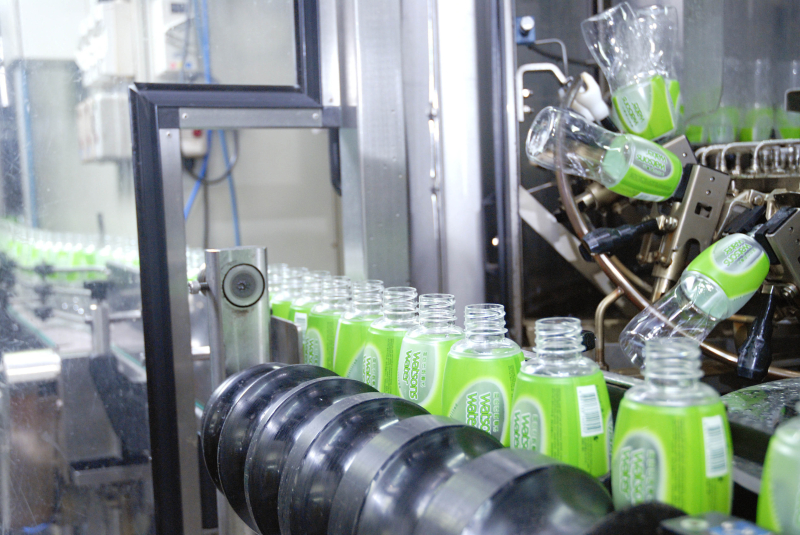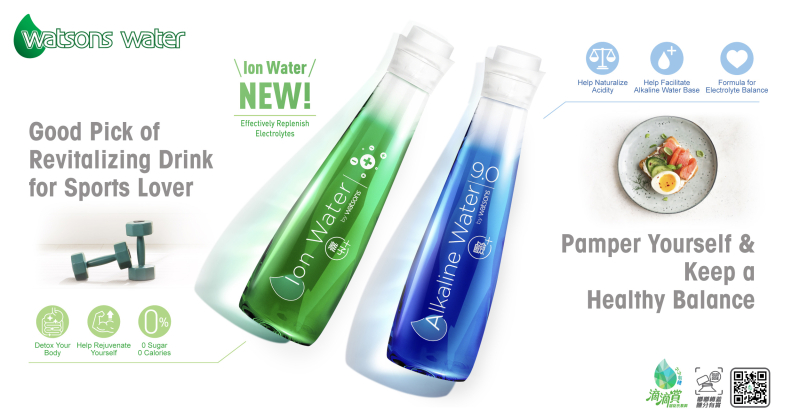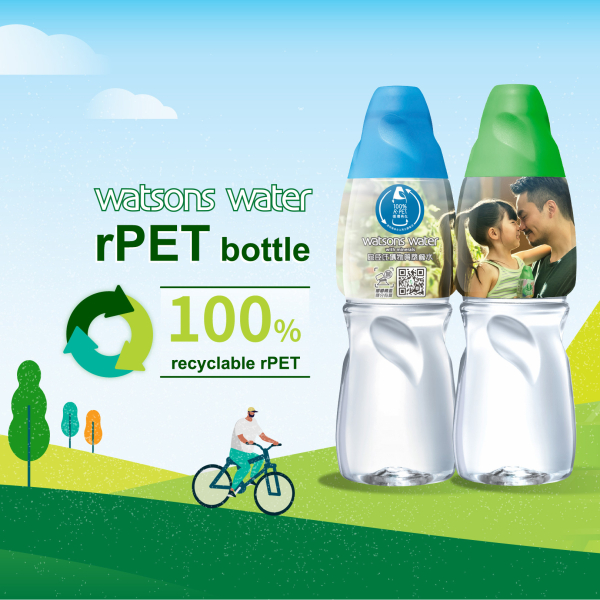Beyond pure H2O – Watsons Water adventures
Water is water – except when the water is special water! However, innovating with water is a huge challenge. Second only to oxygen for its necessity to life, it’s also the second simplest molecule, a mere two hydrogens and one oxygen. Determining how to create more wet value is a greater challenge than for any other consumer product. Undaunted, the Watsons Water team is diving right into the product innovation pool.

Water’s fundamental nature means it can’t be patented. Anyone can develop their own water product and compete on cost (and they often do).
So where does this leave the innovators in the water world?
First up, some trends in consumer preference that can be addressed. One is the recognition that highly sugared beverages (especially carbonated drinks) are definitely not part of a healthy diet. The increasing desire for sugarless beverages often drives people to say “Just water” when considering how to quench their thirst. But this brings us back to “Which water?”
Water’s fundamental nature means it can’t be patented.
Does a water by any other name taste as sweet?
For many years, Watsons Water touted itself boldly as “PURE” – just water, thank you. This arose in an era when the general public was suspicious about any potential impurities in water. Pure water, in addition for drinking straight up, was perfect for making baby formula, for example, or washing your face, catering to those with sensitive skin.
Later, some people found the lab-distilled image to be too pure – while others still thought it the main selling point. The Watsons Water team, then and now, considers market trends in how people feel about the source of water. That doesn’t mean they copy whatever the latest trend is. While springwater has built brands, many dislike the environmental impact of water that has been shipped around the world when local water will do.
But what does it DO?
If a water product just adds flavour or colour with no health benefit, consumers will perceive it as being needlessly full of artificial additives. But even healthy additives pose challenges.
If a vitamin C additive makes the water look orange and taste citrusy and acidic, it will (in many markets) be perceived as a light juice, turning off those who want the vitamin C but think juice is not as good for them as water. In fact, ascorbic acid (vitamin C) supplements appear off-white, light tan or light grey. However, none of these colours make a water product look attractive; they make it look suspect. So companies that provide supplements for beverages are constantly conducting research into different variations of supplements that appear, dissolve and react differently in different formulations (read more here). The water innovators at Watsons Water have to keep abreast of the latest research and advances in additive formulation to ensure their competitors don’t get ahead of them and introduce a product that could have been a win for Watsons Water.
Two recent winners in the innovation game are Watson’s Alkaline 9.0 Water and Ion Water. Their packaging is different from the now classic Watsons Water elegant double cap design, to distinguish it from its forebears.
While springwater has built brands, many dislike the environmental impact of water that has been shipped around the world when local water will do.

However, the green and blue colour distinctions have been kept. The Alkaline water bottle is blue – the same colour as a pH strip showing alkaline properties (that many people remember from high school chemistry). Alkaline is the opposite of acidic and the “9.0” in the name indicates it has a pH of 9 (vs a neutral pH of 7.0). Many people are keen to reduce the acidity in their bodies, starting in the gut, where an overly acidic environment can overwhelm the stomach’s mucous membrane and potentially lead to ulcers. Proponents sometimes claim that alkaline water helps neutralise acidity and promotes a healthy lifestyle. Either way, it’s proving a hit with consumers – and it’s definitely a water product.
Two recent winners in the innovation game are Watson’s Alkaline 9.0 Water and Ion Water.
The new green water is Watson’s Ion Water. The ions, in this instance, are the dissolved components of sodium chloride, potassium bicarbonate, calcium chloride and magnesium sulphate. This speaks to the growing awareness of the role of the ionic form of these products in helping the body to absorb water and rehydrate faster. A little like sports clothing fashion (how many people wearing Nike shoes around town are really going to play basketball?), athletes are leading the general public in their choice of drinks. Old-school sports beverages had high levels of energy-boosting sugar – which really isn’t needed for daily life. A no-sugar ionic alternative is vastly preferable to many consumers.
These are just two of the latest innovations from the Watsons Water team that answer public demand and are capitalising on changes in thinking about how to consume the most important liquid of life. As scientific understanding flows into popular opinion, the market mood will move again – and Watsons Water will be there to answer the people’s needs.
